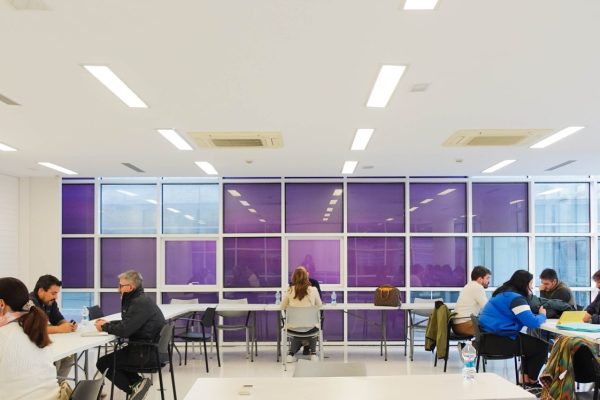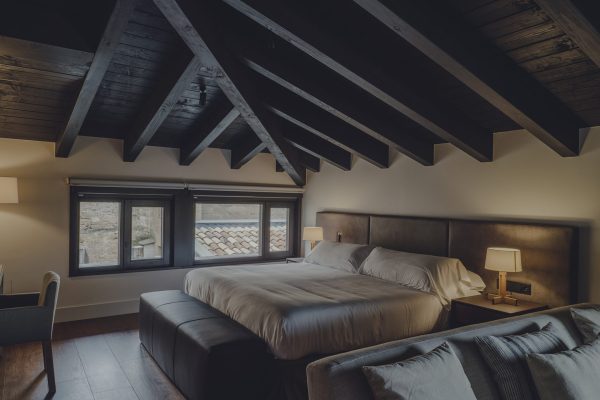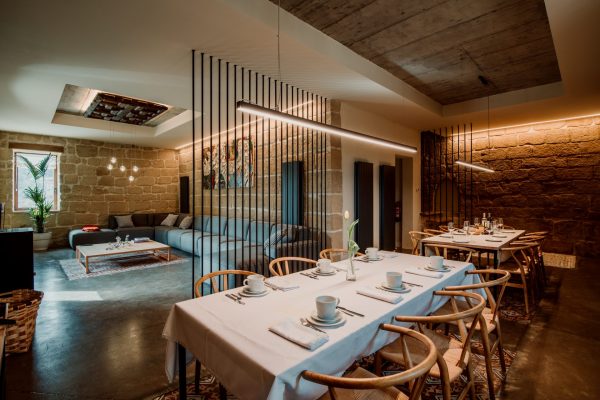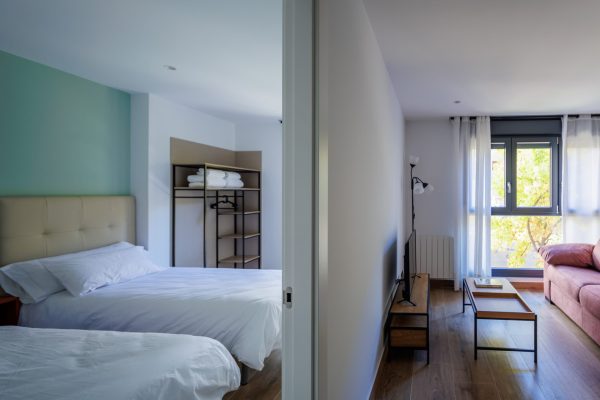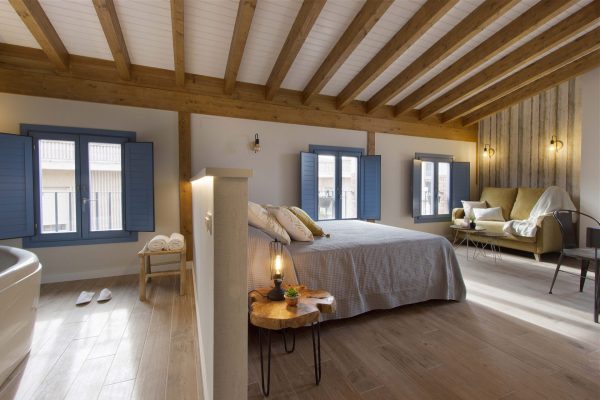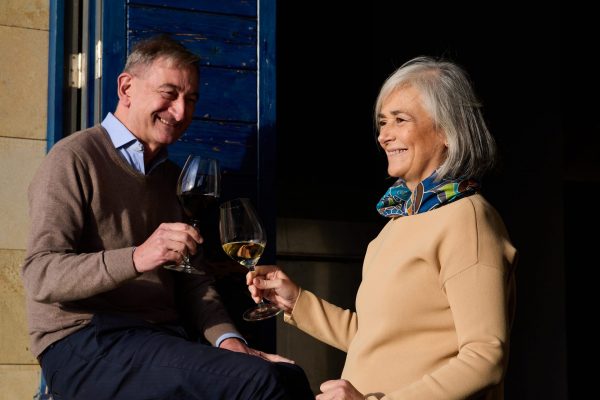The Romanesque art enjoys great popularity among those who enjoy visiting monuments, carvings or ruins in every corner of La Rioja and beyond our borders.
La Rioja has numerous Romanesque vestiges scattered all over the place, some of them unknown.
This article is a compilation of 10 Romanesque monuments together with the precise instructions on how to visit them. In some cases they can be visited on a daily basis, while in others it is only possible to visit these centuries-old temples for a few days a year.
Take note.
1. Church of San Bartolomé in Logroño

The Church of San Bartolomé is located in the square of the same name. It was built in the 12th century and was the oldest surviving church in Logroño.
From Romanesque style was attached to the city wall. In the 16th century it was heavily remodelled.
The church has three naves, separated by polygonal pillars. the Romanesque transept and apse. The chevet is also Romanesque, with a semi-circular central apse, covered with a pointed barrel vault.
However, most of the construction along with the façade is Gothic. The façade features the carefully carved Gothic Gothic Gothic doorway, is notable for its iconography, which depicts episodes from the life of Saint Bartholomew. In its construction, use was made of some of the Romanesque images above.
It was declared an Asset of Cultural Interest in the Monument category on 18 September 1866.
Visiting hours: Monday to Sunday from 11:30 to 12:00 and from 12:30 to 13:15.
2. Monastery of Suso in San Millán de la Cogolla

The monastery of Suso has its origins in a Visigothic monastery established around the tomb of the hermit known as San Millán de la Cogolla, During the following centuries and up to the 12th century, it underwent several extensions as a result of the change from eremitic to cenobitic and later monastic life, with the following distinguishing feature being the Mozarabic and Romanesque styles.
In 1030, Sancho III the Great of Pamplona, on the occasion of the sanctification of San Millán, restored and extended the monastery to the west. This extension consisted of extending the naves towards the foot of the church, adding barrel vaults and two more semicircular arches to the existing horseshoe arches. The slope of the land changes the location of the altar, which is oriented to the east.
Finally, further extensions with walls and round arches were made in the 11th and 12th centuries. before the primitive caves of the hermitage.
The sarcophagi of the seven Infantes de Lara from the legend are in the doorway of the Monastery. The seven brothers of Lara were led into an ambush by Muslim troops in which, despite their warrior prowess, they were beheaded and their heads sent to Cordoba on the orders of their uncle Ruy Velázquez. There they were painfully contemplated by their father Gonzalo Gustioz.
The importance of the monastery of Suso is not only artistic and religious, but also linguistic and literary. Here a monk wrote the Emilian GlossesThe first annotations written in Basque and Spanish, It has therefore been considered the cradle of both languages.
The monastery is not accessible by private vehicle, but buses leave from the Monastery of Yuso to the Monastery of Suso every 30 minutes. Admission is free for children up to 12 years old, from 13 to 18 years old the price is 3.25€, general admission 4€ and 1€ for the over 65s.
Office hours: Monday to Sunday from 9.30 am to 1.30 pm and from 3.30 pm to 5.30 pm. In summer until 18:30h.
Visiting hours: From 1 November to the vespers of Holy Wednesday: from 9.55am to 1.25pm and from 3.55pm to 5.25pm.
From Easter to October: 9:55 - 13:25 and from 15:55 to 17:55h.
3. Hermitage of San Esteban in Viguera

When you reach Viguera coming from Logroño on the N-111, the village of Viguera is on the left hand side, while the hermitage of San Esteban is on the right hand side. under picturesque crags.
The Hermitage of San Esteban de Viguera is a very special Romanesque building. It was rebuilt in 1955 and inside it has some of the most valuable Romanesque paintings in the region.
To visit this curious Romanesque hermitage You must first go to one of the bars of the village "El Refugio" (host of La Rioja Premium) located in the square and open from 7 am. There you will be given the keys with a deposit of 5€ which will be returned to you when you leave them.
Returning to the N-111 and crossing it, the following begins the path that climbs steeply upwards along the hillside. The route is marked and takes between 20 and 30 minutes to walk. The views and the location of the hermitage are well worth the effort.
4. Church of San Julián in Castilseco

Castilseco is a small village in barely 10 inhabitants, but which has a Romanesque jewel, the Church of San Julián.
Built between the 12th and 13th centuries in ashlar stone, it is a small church consisting of a nave and a presbytery topped by a semicircular apse. It has barrel vault pointed, and a quarter-sphere vault. The triumphal arch which separates the chancel from the nave, is also pointed, resting on two pairs of attached columns with capitals, one vegetal and one with the faces of four kings.
Si preguntas a las personas del pueblo y tienes un poco de suerte, es posible que puedas ver la iglesia por dentro para contemplar restos de pinturas originales.
5. Church of El Salvador in Tirgo
It has been documented since 978 that the monastery of Santa María de Tirgo existed. It must have been a temple from the time of the repopulation. Underneath the village square is a early medieval necropolis with graves below the Romanesque church building This suggests that the cemetery was located around an earlier, smaller temple.
The Church of El Salvador is a late Romanesque building from the end of the 12th or beginning of the 13th century. It consists of a nave with three bays and a chancel, both of which are covered with barrel vault pointed. The nave and presbytery are separated by a triumphal arch The belfry is supported by a belfry with two openings. A semicircular apse is covered with a pointed quarter-sphere vault. It has three carved semicircular windows.
In this temple there are two Romanesque doorways, the main one to the south and another to the west in a place that may not be its original location.
Among the 16th and 17th centuries a sacristy, two chapels to the north and south of the chancel and two arches in the first bay of the nave were added. There is also a choir at the foot of the church and the tower to the north. The main altarpiece, which concealed the Gothic windows of the apse and the Gothic paintings in the apse, also dates from this period.
The interior of the church can be seen on Sundays and public holidays when mass is celebrated, the patron saint of the village being San Salvador on 6 August.
6. Hermitage of Nuestra Señora de Sorejana in Cuzcurrita

In Cuzcurrita de Río Tirón is located the hermitage of Santa María de Sorejana It is probably the parish church of the now defunct village of the same name.
The necropolis discovered next to its southern façade suggests that it was built during the repopulation, around the 11th century, and was depopulated in the 14th century. It is located 1.5 km from the village of Cuzcurrita, on a large esplanade on a road parallel to the River Tirón. The building has Romanesque and Gothic elements, both in its architecture and sculpture.
The Romanesque baptismal font was transferred to the Church of San Miguen Arcángel in Cuzcurrita, as well as the carving of the Virgin of Sorejana.
The wayside shrine opens the Sunday before Pentecost Monday (8 days before) when the pilgrimage is celebrated in the hermitage with precession in which the carving of the Virgin is carried from the Church of San Miguel, as well as the 8 September when mass is also celebrated at 13h and the image of the Virgin is returned to the village church.
7. Ruins of the hermitage of Nuestra Señora del Barrio in Cellorigo

About 500 metres before you reach the village of Cellorigo on the main road you can visit the ruins of the hermitage of Santa María del Barrio.
A temple Romanesque built in the 12th century which underwent a total renovation around the 18th century, taking advantage of the straight chancel of the original sanctuary.
The nave was covered with a wooden roof over ashlar walls, and the chancel with a pointed barrel vault which is still preserved. This vault starts from a simple impost, which runs along the north and south walls of the chancel. From the baroque is the semicircular triumphal arch on Tuscan pilasters, which is still preserved, and also the sacristy that was on the north side of the chancel, and a chapel with a portico on the south side of the nave. Above this building was the hermit's house, Today it is in ruins, although the lintelled entrance can be seen at the foot.
The north wall is the best preserved part of the hermitage, together with the Romanesque chancel.
Its ruined state means that it can free to visit always with the necessary caution.
8. Davalillo Castle in La Rioja

The castle of Davalillo is a medieval military enclosure located in the municipality of San Asensio. It is a Romanesque-style castle, located on a hill overlooking the valley of the river Ebro. At the foot of the castle is the hermitage of Nuestra Señora de Davalillo, which must have been the church of the disappeared village of Davalillo.
The castle has a outer walled enclosure and a tower of homagewith a polygonal ground plan.
The castle is documented for the first time when Enrique de Trastámara In 1367 it was handed over to Carlos El Malo of Navarre. Manor of the Manrique family, Dukes of Nájera; cause of confrontation with the Velasco family, constables of Castile.
The pilgrimage of the Virgin of Davalillo is a traditional celebration in which the whole town of San Asensio also climbs the castle with the participation of all the people of San Asensio.
Its condition makes it possible to visit for free any day of the year, although the interior is closed for security.
9. Hermitage of Santa María de la Piscina in Peciña

The hermitage of Santa María de la Piscina is the most complete and beautiful Romanesque building preserved in La Rioja. It belongs to the full Romanesque period, as it was begun around the middle of the 12th century, and has no later additions (except for the coat of arms of the Divisa, placed above the south doorway around 1537). Its interest lies in the fact that it is the only Romanesque hermitage in the region that remains in a fairly pure state and in its early chronology.
The archaeological site consists of the hermitage of Santa María de la Piscinaa necropolis repopulation, a village with semi-rural dwellings **y remains of fortifications or watchtowers.
In the 14th century was depopulated by the Castilian civil war and its inhabitants would later form the nearby village of Peciña.
It is a construction in ashlar stone, which consists of a four-section hall barrel-vaulted roof with three semicircular arches, rectangular presbytery covered in the same way, and Semicircular apse covered by an oven vault. Attached to the north wall of the nave is a rectangular chamber covered with a quarter-barrel vault and a square bell tower on the west gable.
The 15 August, feast of the Assumption of MaryThe members of the motto and the confraternities of the Solar y Divisa del Principado Medieval de Santa María de la Piscina meet here for their annual meeting, attend a mass at the hermitage and end the day with a brotherhood meal.
Visited visits to the chapel are sometimes organised from the San Vicente de la Sonsierra Tourist Office, you can request information on the following telephone number 609 27 44 88from Monday to Sunday from 10 a.m. to 2 p.m. or at the post office info@svsonsierra.es
10. Church of San Cristóbal in Canales de La Sierra
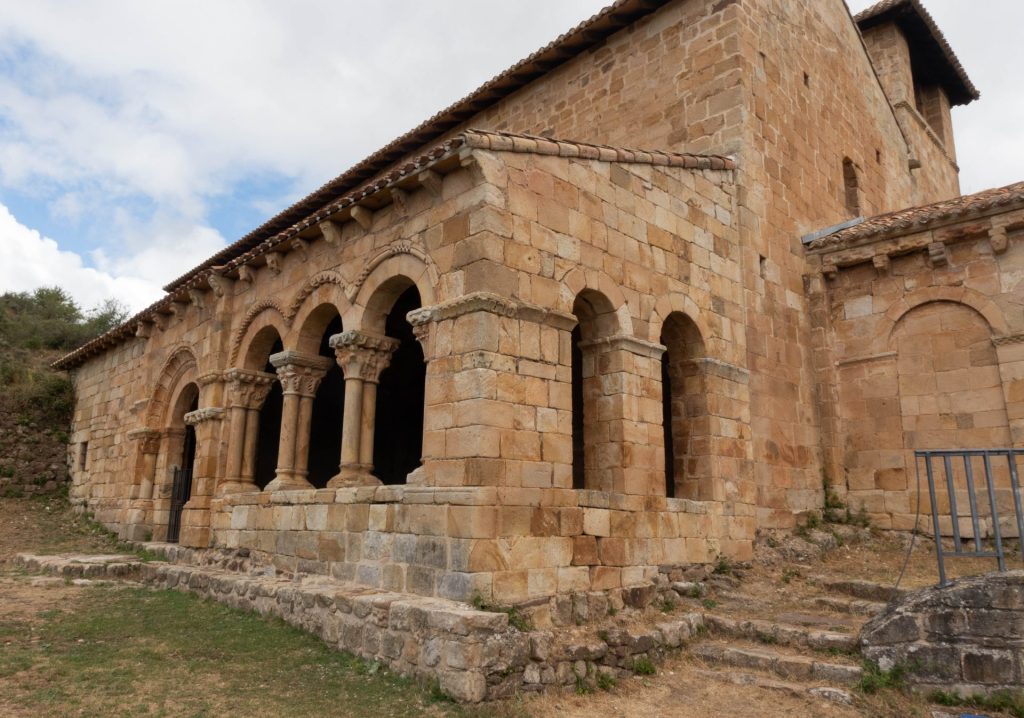
Canales de la Sierra is located at 1027 metres altitude and is declared Historic Site for its architecture of emblazoned houses.
In Canales you can find the Hermitage of San Cristóbal on a small hill from where you can see the village. It is a Romanesque building made of ashlar masonryIt has a nave with five bays and a quadrangular chancel. The nave is covered with lunette vaults over semicircular arches and Tuscan pilasters.
The headerIt is covered with a half-barrel vault, currently plastered, and has blind arches on its interior walls, north and south, formed by two arches on each side supported by pilasters with imposts decorated with chequered studs in three rows.
The front page It is composed of three semicircular prismatic archivolts, a flared rain guard with groove decoration, plain crests and two prismatic jambs on the sides.
Also to the north, in the second section, there is an open capilla covered with dome The east wall has a linteled access to the tower. The entrance to the church is in the second section, open on the south wall, under a portico or gallery covered with a wooden roof.
The whole hermitage is very rich in detail, both inside and out.
From the instagram account @canales_de_la_sierra they attend visits during the summer and on weekends by appointment with Álvaro, with the possibility of climbing the tower and enjoying a magnificent panoramic view of Canales de la Sierra.
10 + 1. Romanesque Interpretation Centre in Treviana
The Romanesque Centrelocated in the village of Treviana, is a meeting point for those who want to discover the Romanesque art of the region of La Rioja Alta.
The Romanesque Centre has four main resources:
A projection room, with a spectacular audiovisual presentation. A showroom, with information panels, stonemasonry pieces and a space for educational workshops. A documentation roomwith an extensive library dedicated to the Middle Ages in general and Romanesque Art in particular. A virtual room located on its website riojaromanica.com
The Interpretation Centre is open Sundays and public holidays from 12h to 14h. Space in which they take place 30-minute guided tours at a price of €2.
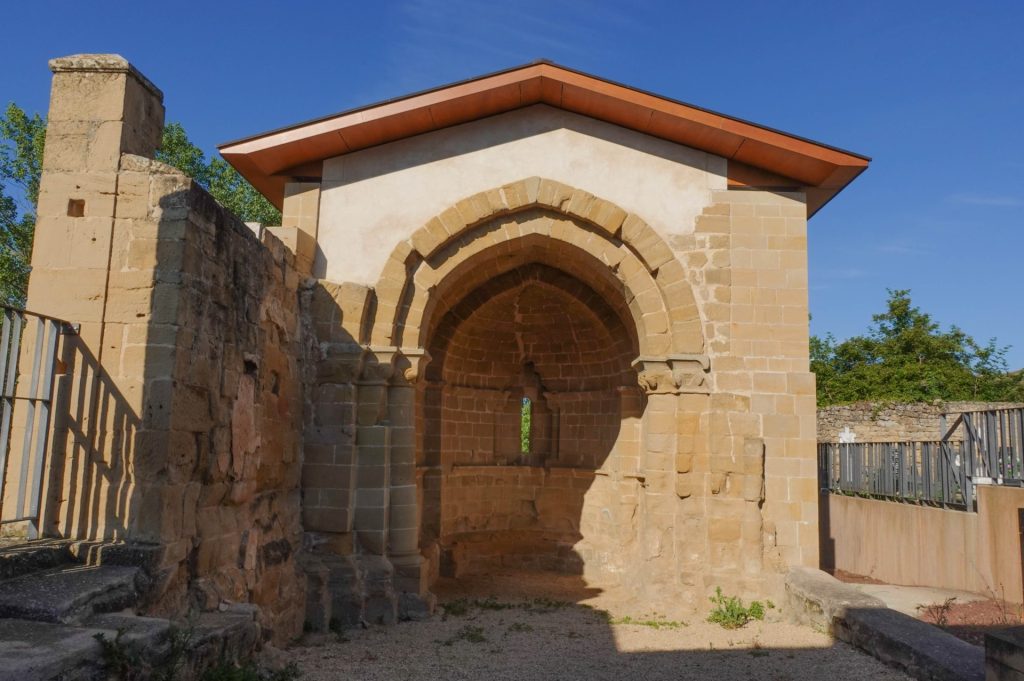
In Treviana we find Romanesque art in Capilla de la Concepción a on the outskirts of the town. This unfinished Romanesque chapel has recently been restored and it is estimated that it was built at the end of the 12th century or beginning of the 13th century in the so-called pago de San Pedro. Only its chevet was completed, which is covered with a slightly pointed barrel vault. The northern and western walls were built, but it seems that the roof was not completed.

On the outskirts of the town lies the Hermitage of Junquera with its Romanesque-style chancel. It is a presbytery where the straight part is covered with a pointed barrel vault and the apse with a quarter sphere vault. The decorative and constructive typology is closely related to that of the Concepción de Treviana, also having on the outside of the apse, two beams of three columns that divide it vertically into three sections.
La Rioja is rich in heritage from all periods, although Romanesque art has that special character that captivates visitors so much. Hopefully this article will help you to delve into the Romanesque art of La Rioja and to continue researching and exploring its vestiges throughout the region.
You are also welcome to subscribe to the La Rioja Premium weekly newsletter to keep up to date with all the latest news and events.



